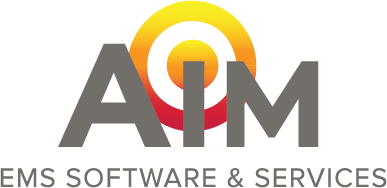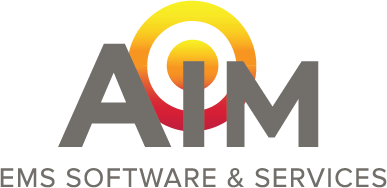
This blog post is part of a series that addresses ambulance billing best practices. Our ambulance billing blog series highlights tips and insights to help you improve ambulance billing efficiency, lower ambulance claim rejections, and get reimbursed faster.
Why is the Physician Certification Statement (PCS) for non-emergency ambulance services so challenging for EMS billing?
The challenge is real because you have to rely on the facility requesting the non-emergency ambulance services to make sure the PCS is filled out properly by the right person and on-time. It helps when your EMS Dispatch/Intake staff have a good relationship with the facilities and can collect the PCS before the crew leaves the station, but even then, there can be obstacles when individuals coordinating the non-emergency ambulance transport don’t have a clear understanding of why or when a PCS is required.
Furthermore, when crews are relied on to collect the PCS at the time of transport, they often spend precious time tracking it down or trying to get valid signatures, causing transport delays and creating call backlogs.
This blog post breaks down the Physician Certification Statement do’s and don’ts that are key to successful, compliant EMS reimbursement of medically necessary non-emergency ambulance services.
DO #1: Know WHAT a Physician Certification Statement (PCS) represents.
A Physician Certification Statement (PCS) is a written order certifying the medical necessity of non-emergency ambulance transports. Centers for Medicare and Medicaid Services (CMS) requires a PCS for both scheduled and unscheduled non-emergency ambulance transports for patients under the direct care of a physician.
As defined by CMS, there are four non-emergency ambulance transport scenarios:
- Unscheduled - Under Direct Care of Physician: a single unscheduled/irregular ambulance transport where the patient is a resident of a facility and is under the direct care of a physician.
- Scheduled Non-Repetitive - Under Direct Care of Physician: a single scheduled/regular ambulance transport where the patient is a resident of a facility and is under the direct care of a physician.
- Scheduled Repetitive - Under Direct Care of Physician: repetitive ambulance transport is defined as medically necessary, non-emergency ambulance transportation furnished in 3 or more round trips during a 10-day period, or at least 1 round trip per week for at least 3 weeks. Repetitive ambulance services are often needed by beneficiaries receiving dialysis or cancer treatment.
- Unscheduled/Scheduled - Not under Direct Care of a Physician: a single ambulance transport for a patient who resides at home or a facility and is not under the direct care of a physician.
DO #2: Know WHEN a Physician Certification Statement is required for non-emergency ambulance services.
- Unscheduled - Under Physicians Care
- Obtain the PCS prior to submitting the claim.
- PCS must be obtained within 48 hours of ambulance transport.
- If unable to obtain the PCS within 21 calendar days following the date of transport, document each attempt to obtain the PCS, then submit a claim.
- Scheduled Non-Repetitive - Under Physicians Care
- Obtain the PCS prior to submitting the claim.
- PCS may be obtained within 48 hours of ambulance transport.
- If unable to obtain the PCS within 21 calendar days following the date of transport, document each attempt to obtain the PCS, then submit a claim.
- Scheduled Repetitive - Under Physicians Care
- Obtain the PCS from the physician prior to submitting claims and before services are furnished.
- PCS must be dated no earlier than 60 days before the date the service is furnished.
- Unscheduled/Scheduled, Not under Physicians Care
- No PCS is required before submitting claims.
- Covered only if they are furnished to a patient whose medical condition is such that other means of transportation are contraindicated.
When a PCS cannot be obtained in accordance with CFR Section 410.40(d)(3) (iv)">42 CFR Section 410.40(d)(3)(iv), a provider/supplier may send a letter via USPS Certified Mail with a return receipt proof of mailing or other similar commercial service demonstrating delivery of the letter as evidence of the attempt to obtain the PCS.
DO#3: Know WHO is responsible for initiating, creating, and collecting the Physician Certification Statement.
The facility’s ordering physician is requesting the non-emergency ambulance transport, which means the facility is responsible for completing the PCS. However, the EMS agency should furnish the facility with a PCS template form that meets the CMS guidelines for non-emergency ambulance transport reimbursement. Ultimately, it is the ambulance provider’s responsibility to make sure the proper documentation is obtained and why it is extremely important to try and collect what is needed during call intake/dispatch.
All parties (facility staff, crew, EMS billers) need to understand who can/cannot sign the Physician Certification Statement, which is dependent on the type of non-emergency ambulance transport:
- Unscheduled - Under Physicians Care
- Physician (MD)
- Physician Assistant (PA)
- Nurse Practitioner (NP)
- Clinical Nurse Specialist (CNS)
- Registered Nurse (RN)
- Discharge Planner
- Scheduled Non-Repetitive - Under Physicians Care
- Physician (MD)
- Physician Assistant (PA)
- Nurse Practitioner (NP)
- Clinical Nurse Specialist (CNS)
- Registered Nurse (RN)
- Discharge Planner
- Scheduled Repetitive - Under Physicians Care
- Attending Physician
Some key items that CMS outreach is trying to address regarding PCS signatures and credentials include:
- The signature, credentials, and date must be readable
- The prefix “Dr.” is a title and not a credential
- Stamped signatures or file signatures are not acceptable
DO #4: Make sure crews understand that the PCS supports (not replaces) the Patient Care Report.
In all cases, the provider or supplier must keep appropriate documentation on file and, upon request, present it to the Medicare contractor. The presence of the signed certification statement or signed return receipt does not alone demonstrate that the ambulance transport was medically necessary. All other program criteria, including a PCR, must be met in order for payment to be made.
The collective documentation for a non-emergency ambulance transport should “paint a picture” of medical necessity. And, just as important, the documentation should not contradict each other.
DON’T #1: A PCS should never be a carbon copy of a previous non-emergency ambulance billing PCS for the same patient.
The PCS should be individualized for each patient and reflect the patient’s condition at the time of transport. Even if you are dealing with a repetitive patient that is always in the same condition, you cannot copy previous PCSs then sign and date it like it’s new.
DON’T #2: Do not assume that every dispatcher, crew member, or EMS biller in your organization understands the rules associated with a PCS.
All new staff members should be trained on PCS guidelines and processes, and refresher training should occur annually.
Some state Medicare contractors have adopted the Prior Authorization model for scheduled, repetitive non-emergency ambulance transports. It’s important to know your specific state guidelines. The following state Medicare contractors follow the Prior Authorization requirements: Delaware, District of Columbia, Maryland, New Jersey, North Carolina, Pennsylvania, South Carolina, Virginia, West Virginia. More information related to the CMS Prior Authorization Model can be found here.
AIM EMS Billing Services is here to help you with non-emergency ambulance services.
AIM’s EMS Billing Service has created a PCS cheat sheet that many EMS dispatchers, crew members, and EMS billers have found helpful and we are happy to share it with you. Just email us at sales@aim-system.com, and we’ll send you an electronic version.
If you have questions for us on non-emergency ambulance billing — or any other type of ambulance transport billing — don’t hesitate to give us a call at 1-800-726-4690. We are here to help!
More non-emergency ambulance services resources:
- https://www.cms.gov/Regulations-and-Guidance/Regulations-and-Policies
- https://www.ngsmedicare.com/ngs/portal/ngsmedicare
- https://www.palmettogba.com/Palmetto/Non-emergency_Ambulance_Services_Handout
- https://www.pwwemslaw.com/sites/default/files/forms/medicare-and-billing-related-forms
- https://www.cgsmedicare.com/partb/mr/pdf/ambulance.pdf
- https://www.novitas-solutions.com/webcenter/portal/Medicare
- https://www.cms.gov/Outreach-and-Education/Medicare-Learning-Network
Other articles in this Ambulance Billing Best Practices blog series:




